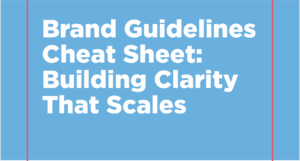Generating leads in the medical device industry is not for the faint of heart. Unlike consumer markets where the path from awareness to purchase can be measured in minutes, medical device sales cycles are long, complex, and heavily scrutinized.
Clinicians, procurement teams, hospital administrators, and sometimes even patients all have a say. Regulatory compliance shapes every piece of communication. And with budgets tightening across healthcare, standing out isn’t just about being louder—it’s about being smarter.
So how do you build a medical device marketing strategy that actually delivers qualified leads? Let’s explore proven tactics that work in today’s medtech landscape.
Why Lead Generation Is Different for Medical Device Marketing Companies
For medical device marketing companies, generating leads is not just about volume. A thousand unqualified leads won’t move the needle especially if they’re not in your target specialty or lack decision-making authority.
Instead, lead generation in medtech needs to focus on:
- Precision targeting. Reaching the right specialists, at the right institutions, at the right stage of the buying journey.
- Multi-touch engagement. A surgeon may need to hear about your device five times before requesting a demo. A procurement team may need six months of data before issuing a purchase order.
- Trust and credibility. Because your audience literally deals with life and death outcomes, most specialties are risk-averse (orthopedists may be a different animal). Leads generally only convert when they trust your data, your messaging, and your brand.
That’s why a successful medical device marketing strategy needs to balance scientific credibility with creative engagement.
Building a Strategy That Fuels Lead Gen
Before diving into channels and tactics, the foundation matters. Here are three pillars every lead gen program should include:
- Clear positioning. Your device needs a simple, differentiating value proposition: what makes it better, safer, or more cost-effective than alternatives.
- Regulatory-aware messaging. Everything you say must pass compliance review while still being compelling enough to capture attention.
- Stakeholder mapping. Understand who influences the buying process—clinicians, nurses, administrators, payers—and ideally tailor your content to each.
With these in place, your lead generation programs can run with focus and consistency.
Inbound Marketing for Medical Device Companies: A Step-by-Step Approach
Inbound marketing is one of the most effective ways to build awareness and capture qualified leads. For medical device companies, it looks like this:
- Create value-driven content. White papers, webinars, case studies, and explainer videos that address clinician pain points.
- Optimize for search. Ensure your content ranks for the right clinical and procedural keywords so HCPs find you. This means that you need to conduct a search audit upfront. Think search first.
- Leverage social proof. Don’t forget to include patient and clinician testimonials. We are all human, and nothing is more impactful than a real story.
- Gate premium assets. Use forms to capture contact details when offering in-depth reports or product comparisons.
- Nurture with automation. Drip campaigns that deliver a steady stream of insights, building trust until your lead is ready to convert.
- Measure and refine. Track which content delivers the highest conversion rates and double down.
Inbound is not about shouting louder—it’s about making it easy for the right people to find you.
Content That Converts: From White Papers to Webinars
Not all content is created equal. In medical device marketing, the pieces that perform best are those that educate, not sell. Consider:
- Live webinars. We have seen tremendous responses from live webinars – especially when accompanied by a Q&A. Ideally these webinars would include the perspective of an influential and trusted colleague, but we have also seen webinars run by a brand’s marketing and clinical team perform well. So don’t think that just because you don’t have a ‘expert’ that your audience won’t find what you’re saying valuable.
- On-demand webinars. Busy specialists may not attend live, but they’ll watch replays if the topic is relevant.
- Clinical white papers. These show your credibility and help clinicians build a case for adoption.
- Case studies. Real-world success stories resonate deeply with peers. And depending on your audience, understanding the business implications of product adoption are especially compelling.
- Video demos. Visual explanations of how your device works can bridge gaps that text alone can’t.
Each of these assets should serve as both a value-add for the audience and a magnet for leads.
Turning Medical Device Lead Generation Into Sales Results
Leads are only valuable if they convert into opportunities. To close the loop:
- Score leads effectively. Not every contact is sales-ready. Use scoring models to prioritize surgeon vs. student, C-suite vs. clinical staff.
- Align marketing with sales. Regular check-ins ensure that the leads you’re generating actually match what the sales team needs.
- Track ROI. Whether through CRM integrations or marketing automation dashboards, connect campaigns to revenue outcomes.
When done right, medical device lead generation becomes not just a pipeline builder but a predictable growth engine.
Final Thoughts
Lead generation in the medical device industry is challenging—but not impossible. With the right mix of strategy, content, and technology, you can capture attention, build trust, and convert interest into measurable growth.
At The Matchstick Group, we specialize in helping device companies create inbound programs, campaigns, and assets that not only generate leads but drive adoption. See how we helped Synergy Surgical realize 1800 leads from one campaign.
If you’re looking to fuel growth in 2026, we’d love to help. Schedule a call today and let’s explore how we can turn your lead generation into lasting results.






